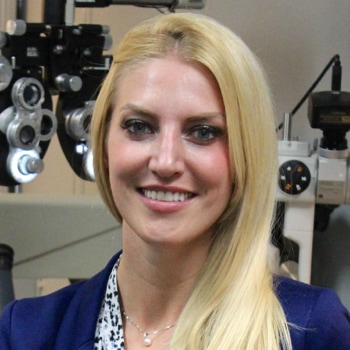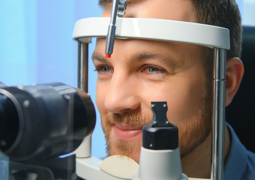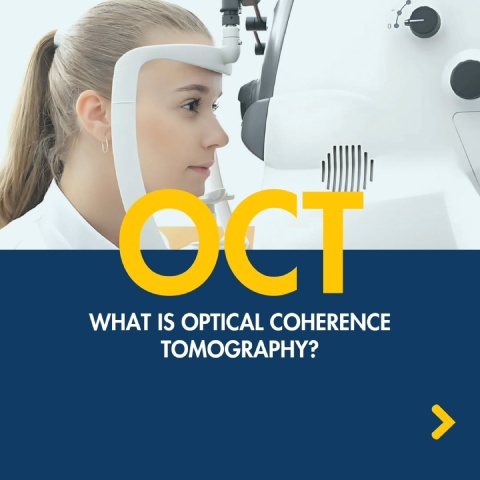Vision is a precious sense. It enriches our lives with colour and light and acts as a critical intermediary for most of our daily tasks. That’s why honing in on the early warning signs of macular degeneration is like preventive maintenance on a vital piece of machinery. Common early warning signs of macular degeneration include:
- Blurry central vision or distorted lines
- Difficulty recognizing familiar faces or reading
- Empty or blind spots in the central vision
These early signs can be subtle, and signs like blurry vision could be a symptom of something else, like an undiagnosed refractive error. So, this highlights the importance of regular eye examinations as we age.
What Does AMD Stand For?
The macula is a small spot near the retina’s center responsible for sharp, straight-ahead vision. Macular degeneration is a condition that affects the macula, which affects your central vision. Although people of all ages can develop macular degeneration, it commonly develops in older adults and is called age-related macular degeneration or AMD.
Types of AMD
There are 2 main types of macular degeneration: dry and wet.
The dry form is more common, accounting for nearly 90% of all cases. Its symptoms typically progress gradually and are caused by a buildup of drusen deposits and thinning of macular tissues. Many people may not completely lose their central vision, but dry AMD can turn into wet at any stage.
While less common, wet AMD is the more aggressive form. It occurs when abnormal blood vessels under the macula start to grow, leaking blood and fluid and causing rapid and severe vision loss. Prompt treatment is crucial for wet AMD because it’s already in the later stages and can progress quickly, resulting in complete loss of central vision.
Understanding these types is critical as treatments can differ significantly.
Early Warning Signs
The behavioural shifts in response to visual impairments can be subtle and easily attributed to aging or external factors. What is key is the persistence of these symptoms over time. Here are some early signs that indicate you should see your eye doctor to rule out AMD.
Blurriness or Distortion in the Central Vision
In the early stages of AMD, an individual may not notice any visual changes. However, they may notice blurriness in their central vision as it progresses. Straight lines appearing wavy could also accompany blurry vision during the intermediate stages of dry AMD.
Difficulty Recognizing Faces or Reading
Central vision aids in all tasks that require focus, such as recognizing faces or reading. It could indicate that the AMD is progressing further and beginning to affect an individual’s central vision if these activities become more challenging.
Empty or Blind Spots in the Central Vision
In the late stages of dry or wet AMD, one might begin noticing dark, empty, or blind spots in their central vision. If left unchecked, these symptoms could lead to total loss of central vision.
Risk Factors
Like silent partners in a careful dance, risk factors for macular degeneration are not always at the forefront of our consciousness, yet they hold significant sway over its development.
Age
Age is the greatest non-modifiable risk factor for macular degeneration, with most cases occurring in people over 50. This correlation to age is the primary reason the condition is commonly called AMD.
Genetic Predisposition
There’s a predestined roll of the dice regarding macular health. Family history can increase the likelihood of developing this condition, signaling the potential presence of certain genes. Your optometrist may recommend more frequent eye exams based on a family history of AMD or other eye diseases and conditions.
Smoking & Lifestyle
We know from years of research now that smoking has a host of negative health effects. But it’s specifically connected to an increased risk of AMD. Other lifestyle factors like high blood pressure, a diet high in saturated fats, and being overweight are also risk factors.
Preventive Measures
There’s no guaranteed way to prevent AMD, but a few things can lower your risk of developing it and its complications.
Regular Eye Exams
The Canadian Association of Optometrists recommends that most adults receive a comprehensive eye examination every 2 years. However, there are times when your optometrist may recommend an annual exam. While these exams aren’t specifically for AMD, they can catch the early warning signs of the condition and provide an opportunity to discuss your risk factors and future treatments.
Choose a Healthy Lifestyle
We cannot escape risk factors like age, family history, and genetics. But considering a few other risk factors, we can take steps, such as eating a balanced diet, quitting smoking, and protecting our eyes from UV light with sunglasses.

Book Your Next Eye Exam Today
Recognizing, investigating, and seeking professional help for these signs we’ve discussed is a proactive step towards maintaining the richness and detail of the world you see. Your eye doctor can help you prevent or treat AMD, along with many other vision-threatening conditions.
Call our Calgary Family Eye Doctors team to book your next exam today. One of our optometrists can examine your eyes so we can proactively approach your overall eye health.





















